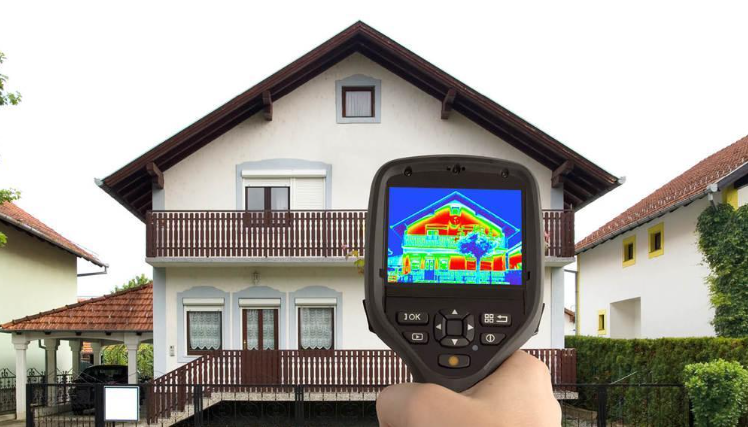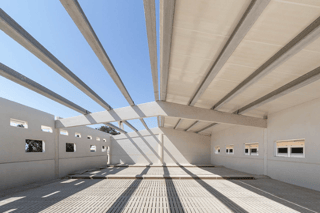Passive houses must meet high demands in terms of thermal insulation and airtightness. By creating an envelope as linear as possible, we can avoid unwanted air infiltrations. To achieve this goal, it is necessary to pay attention to the sensitive constructive points where thermal bridges may exist.
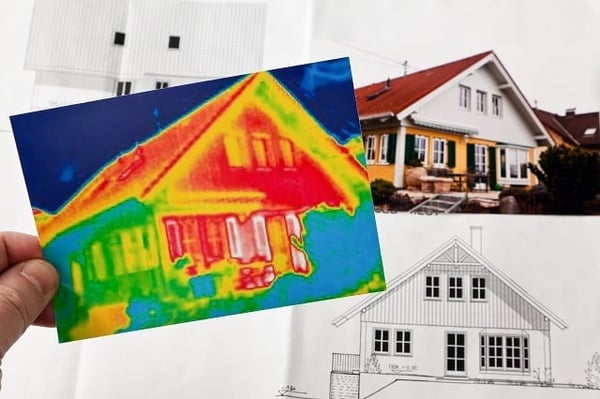
What is a thermal bridge?
Thermal bridges are the differences of thermal insulation that appear when the continuity of the overall insulation of the envelope is broken. This may be due, among other factors, to a change in the thermal transmittance of the materials or to the appearance of different constructive elements.
The Spanish Technical Building Code (CTE) defines them as:
"The area of the thermal envelope of a building in which a variation of the uniformity of the construction is evidenced, either by a change of the thickness of the enclosure or of the materials used, by the complete or partial penetration of constructive elements with different conductivity, by the difference between the external and internal area of the element, etc., which entails a reduction of the thermal resistance with respect to the rest of the enclosure."
Two incompatible concepts: passive houses and thermal bridges
The following example carried out by Casa Pasiva shows the real influence of thermal bridges on the energy consumption of a building:
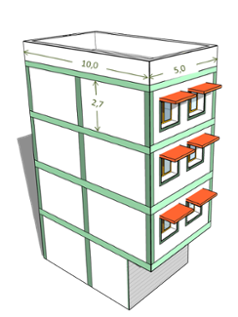
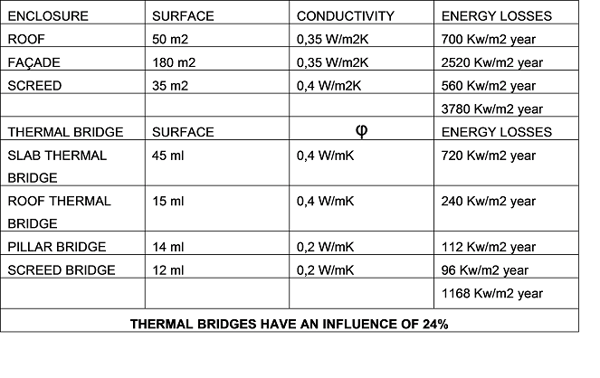
From the above example, we can conclude that, even if they are relatively good thermal bridges, they have a total influence of 24% of the overall consumption of the building. This value could reach a value of 35% and 40% of the building in case of not so favorable thermal bridges.
In traditional architecture, there is a big problem with thermal bridges, since reinforcement measures and detailed studies on how to resolve these junctions have not been taken into account. The intersection of the bricks of the facade of a building with the pillars are "cold spots" where there is energy loss and a risk of condensation.
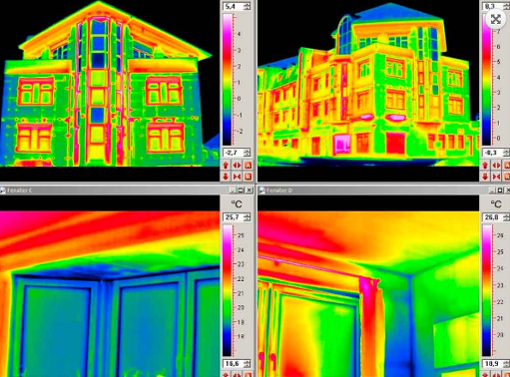
These energy losses must be compensated with an extra expense to acclimate the house, and besides there is a loss of inner comfort. Both concepts are incompatible with the definition of passive houses:
Passive houses or "passivhaus" are constructions that aim to reduce the energy needs of heating and cooling of buildings by up to 75% compared to the conventional form of construction.
Avoiding thermal bridges to comply with passive house standards
The absence of thermal bridges, an optimal thermal insulation and airtightness can be achieved with a material such as polyurethane. This is possible since it allows a continuity of the insulating layer of the envelope, avoiding thermal bridges and creating an air-tight volumetry.
The most common "cold spots" for which polyurethane is an optimal solution are the following:
- Façade-slab junction:
- Polyurethane insulation applied from the inside. The sprayed polyurethane foam should be extended by about 30 cm both on the upper slab and on the lower one in order to correct the thermal bridge that the slab edges imply.
- External insulation with sprayed polyurethane foam.
- Façade-pillars junction. Solving the integrated thermal bridges in the façade, such as pillars, is quick and easy thanks to polyurethane. Simply extend the spray foam around the element, regardless of its shape. The thermal bridge can be treated with less thickness than the rest of the enclosure, but always with a minimum thickness of 20 mm.
- Carpentry. In the case of splays and shutter boxes, since they have unfavorable thermal protection conditions, it is recommended to make sure that the joints between the different materials are covered with the sprayed polyurethane foam.
Rigid polyurethane, whose demand has grown by 240% between 2000 and 2012, is the most efficient and durable thermal insulation material in order to avoid thermal bridges.
Do you want to receive further information about our rigid polyurethane insulation systems to meet the demands of passive houses?
Do not hesitate to contact us.



